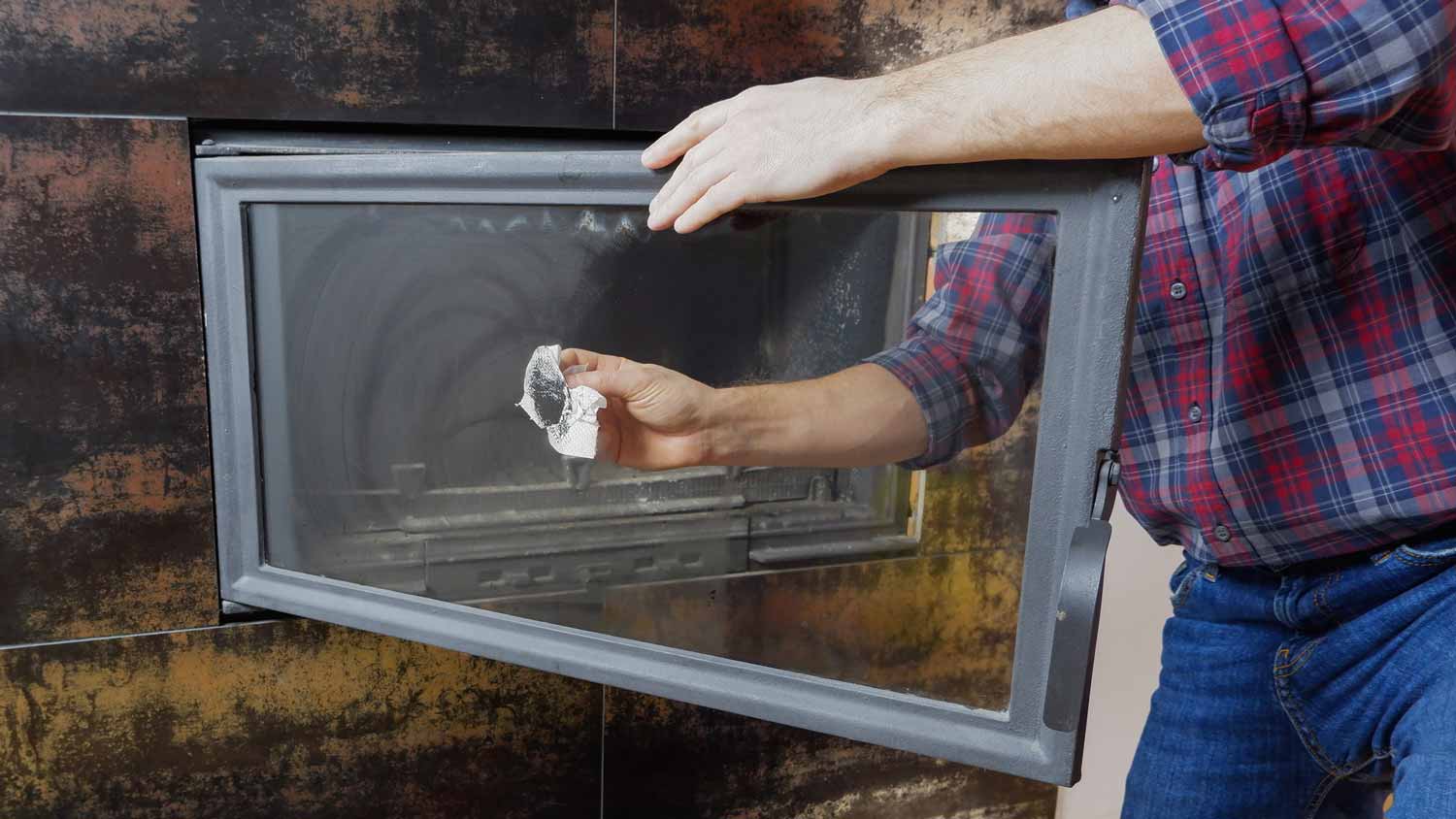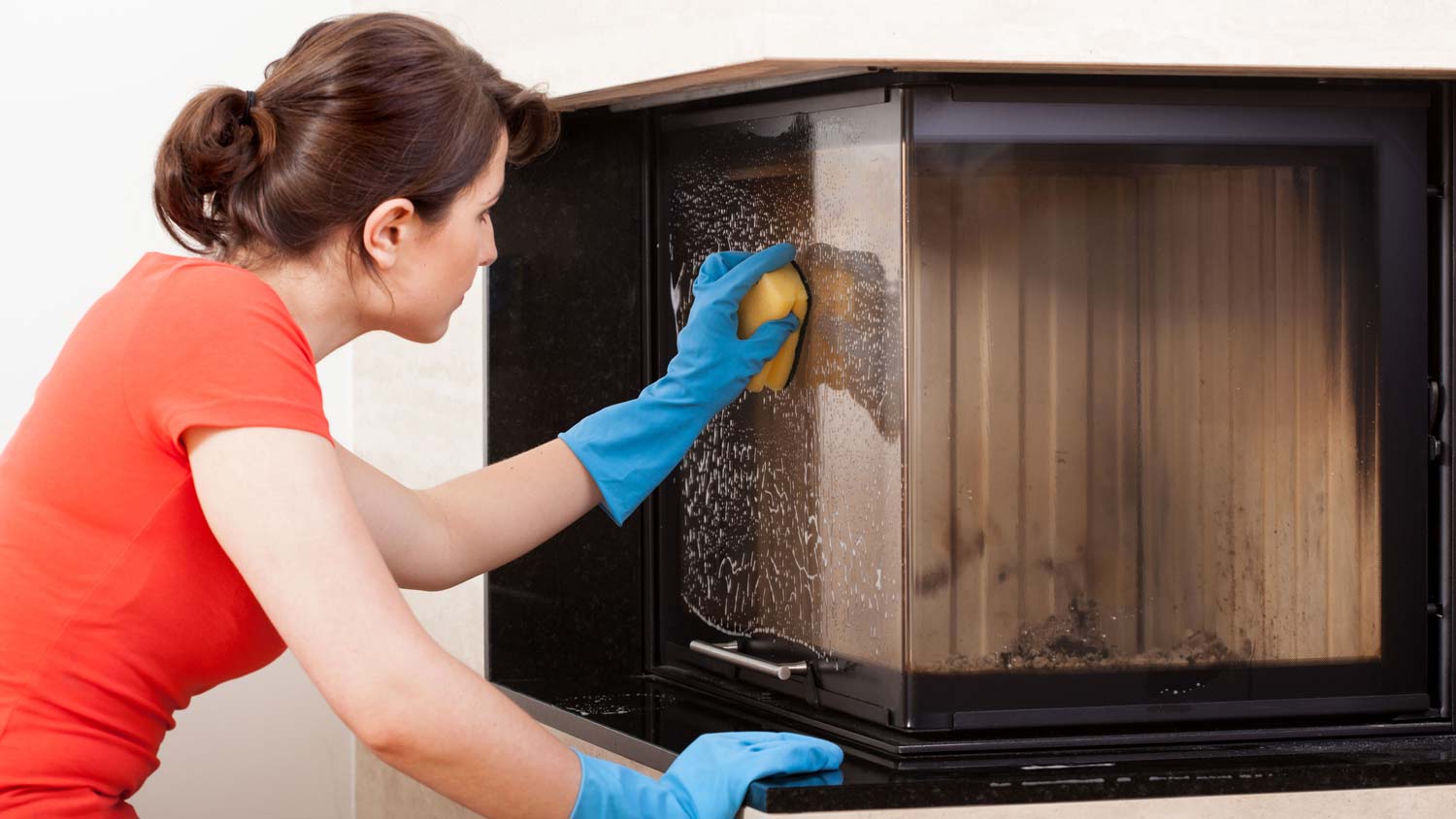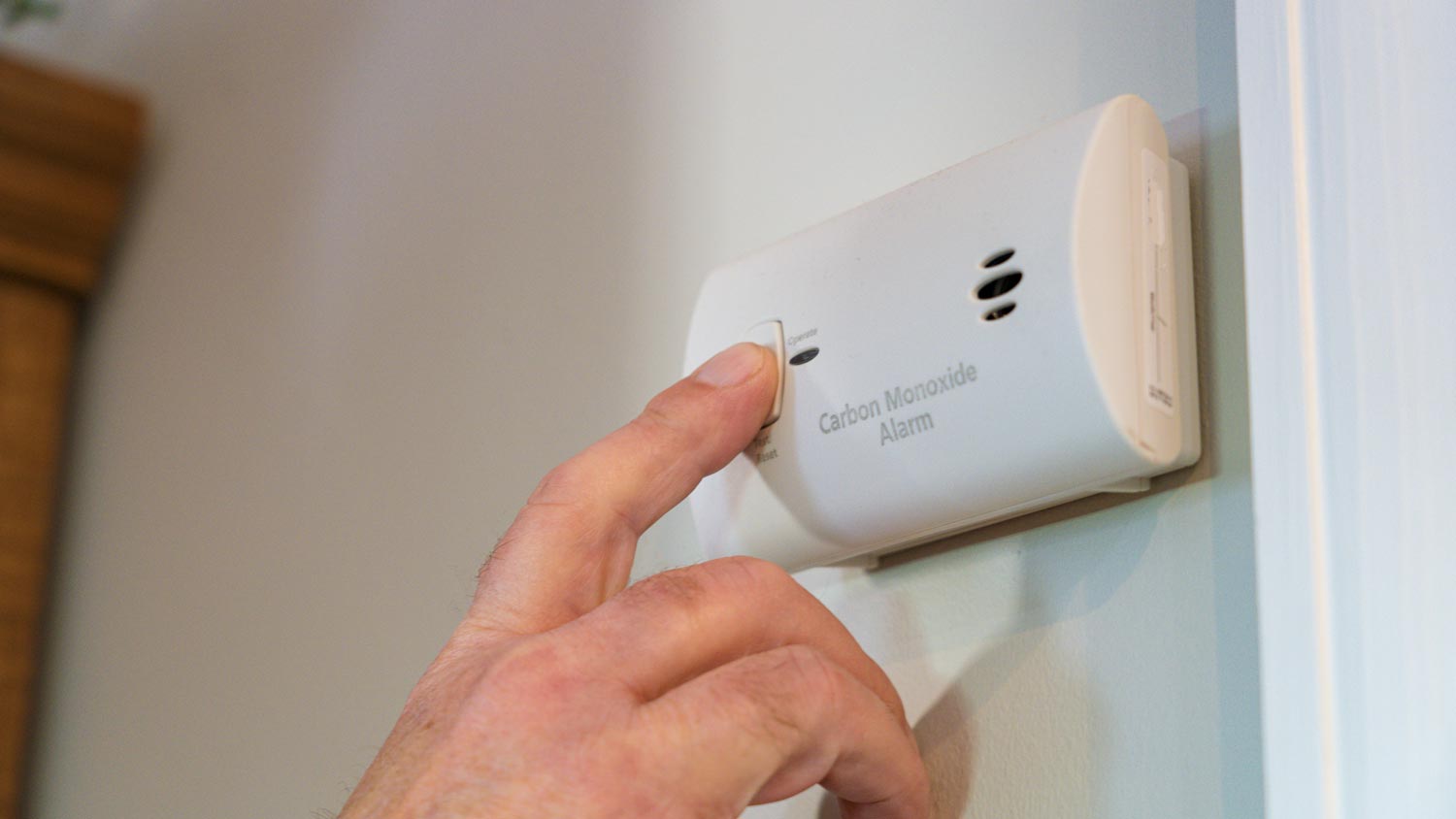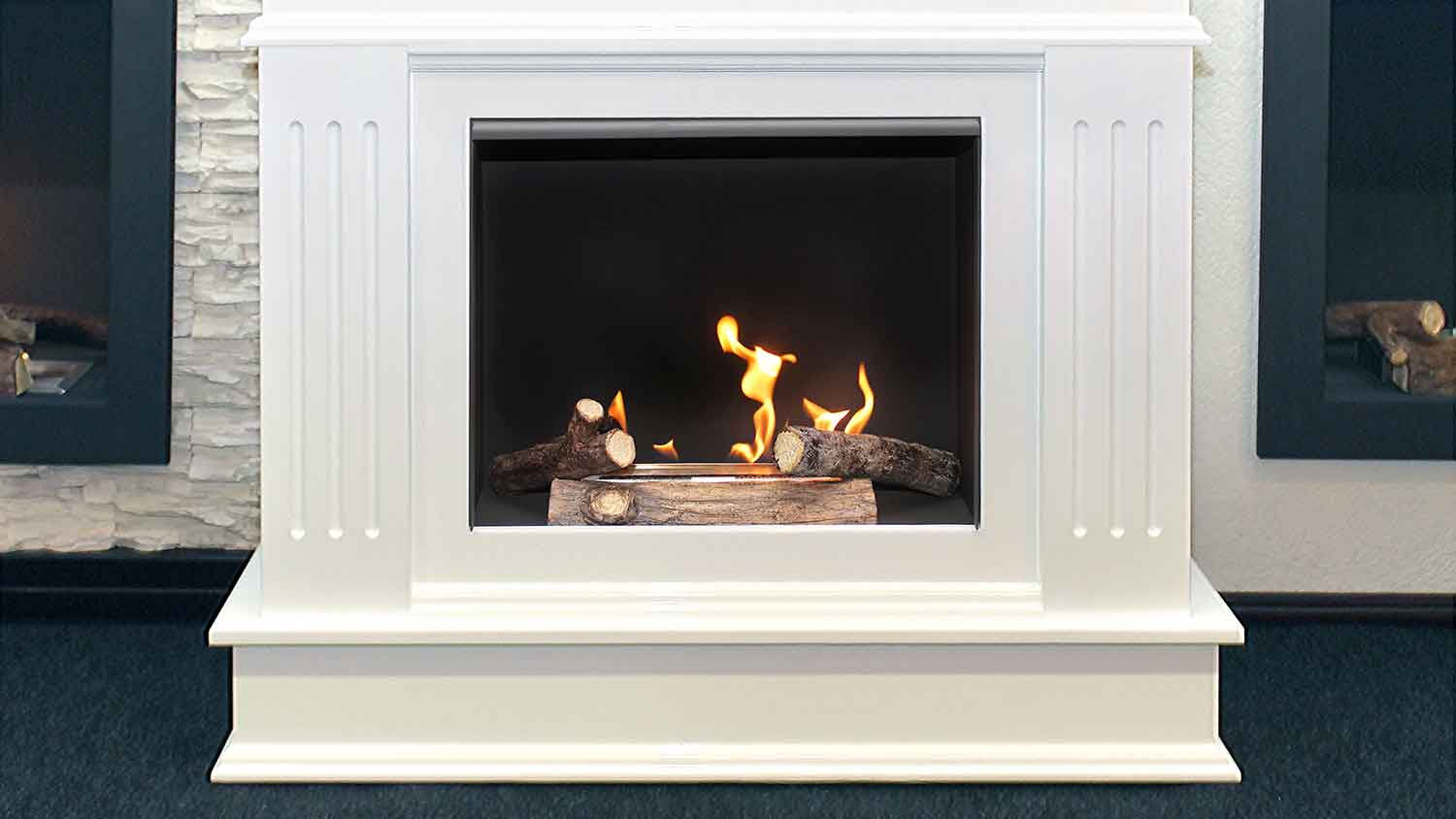
Use our guide to estimate your fireplace repair costs, based on the type of fireplace you have—and what part is broken.
Learn to take care of your fireplace like a pro. Now you’re cooking with gas!


Gas fireplaces offer the warmth and coziness of a real fireplace—just without the need for chopping wood and striking a match. Just grab your remote, press a button, and done! You’ve made fire. But just because gas fireplaces offer greater convenience doesn’t mean they’re completely hands-off. In fact, you’ll want to keep up with gas fireplace maintenance every year to keep your gas logs safe, aesthetically pleasing, and operable.
How do you go about maintenance for a gas fireplace? Follow these tips below.
Clean your gas fireplace during the summer months when it’s not in use. This allows you to clean the glass outside in the fresh air, and you won’t have to worry about turning off the pilot light.
More importantly, now is the time to have your fireplace inspected. The gas plumbers near you are less likely to be busy in the summer months and may have lower rates (or at least be able to work around your schedule more easily).
At the very least, fire up your gas fireplace in the early fall to make sure it’s running properly. The last thing you want is to turn it on in the winter when you actually need it and find out it’s not working.
Whether you’re inspecting, repairing, or cleaning your gas fireplace, always turn off the pilot light before you start. Then give it at least 30 minutes to cool down before starting.
Pro Tip: In the summer months, when you won’t be running your gas fireplace anyway, keep the pilot light off to lower your gas bill. If you perform maintenance and cleaning in the fall, before the weather starts to cool, you won’t have to worry about turning off the pilot light and waiting a half hour—the fireplace will already be cool and safe to start!

The glass panels or doors at the front of your fireplace are removable. Review your owner's manual to determine how to properly remove them, then clean them on a soft surface, like a drop cloth, old blanket, or grass outside.
Inspect the glass for any cracks. A minor chip, while not aesthetically pleasing, is usually OK, but for larger cracks, you’ll want to replace the panel. Fireplace repairs cost an average of $575, but something as simple as replacing a glass panel or door should be more affordable—it’s just a matter of ordering and installing the right part.
Use a fireplace glass cleaner (not regular window cleaner!) to spray down the glass and wipe it down as you would any other glass. You can find a bottle of specialty fireplace glass cleaner at your local hardware store for under $10.
Each year, you’ll want to clean the gas logs inside the fireplace, as they can gather soot or discolor over time. Cleaning vented logs on your own is doable (just follow the owner’s manual); you’ll want to brush off the soot with a soft-bristle brush outside. Vent-free logs, however, should only be cleaned by a professional.
Over time, the logs and any decorative rocks will lose their color. Replacing these is affordable; you can purchase supplies at a local hardware store or online.
Grab your trusty wand attachment for your vacuum cleaner and suck out any cobwebs, pet hair, dead bugs, and dust from the fireplace interior. If your decorative rocks are small enough to fit through the tip of the wand, secure cheesecloth over the tip with a rubber band. This will suck up dust-sized particles but leave your rocks intact.

The exterior face and the louvers of your gas fireplace could also use a good scrub down. Just use a damp cloth for any exterior faces and a dry microfiber towel to wipe up any dust in the louvers.
While you’re cleaning the exterior, inspect the paint closely. If you notice any peeling or bubbling, point this out to the local fireplace technician during your annual inspection. It could be a sign that something’s not operating correctly and typically requires further investigation by a professional.
You can usually control your gas fireplace using a remote control that operates on batteries. Check the batteries in the remote to ensure they haven’t corroded, and take them out during the warmer months when you’re not using the unit.
While you don’t want to replace the batteries prematurely, you should change them every couple of years. At the very least, keep spare batteries on hand in the room so that you can quickly change them out. It’s unlikely, but you don’t want to find yourself needing to quickly turn off the gas logs only to find the batteries in the remote are dead—with no replacement batteries in sight.

If you have any gas appliances in your home (or your home runs on gas heat), you should have carbon monoxide detectors installed throughout the house. Make sure these are operating correctly at least twice a year.
Gas fireplaces turn on and off with the click of a button. How complicated can they be, right? Wrong. Gas fireplaces contain complex mechanical components that are easy to damage when handled or cleaned incorrectly. And because you’re dealing with gas, you need to follow all safety protocols when maintaining your fireplace.
Hold onto that manual when your local gas fireplace contractor initially installs your unit. The manual is a treasure trove of information—from how to clean your gas fireplace (and how often) to when to get an inspection to troubleshooting tips when it malfunctions. Always reference it before working on your fireplace.
It’s also important to recognize that gas fireplace maintenance can be challenging. If you don’t feel up to the task, find a trusted fireplace repair technician near you who can properly clean or repair your fireplace as needed.
Even if you can handle the cleaning portion yourself, you’ll always want to go with a pro for your annual fireplace inspection. Both vented and vent-free units require a yearly inspection; vented units especially require a thorough inspection to ensure the toxic fumes are properly exiting your home.
And though vented fireplaces don’t have to vent through a chimney (no need to worry about the cost of a chimney sweep!), many homeowners choose to vent their gas fireplaces through the existing chimney structure. If you have a brick chimney, you may also need to hire a trusted masonry contractor in your area for inspection and repair.
From average costs to expert advice, get all the answers you need to get your job done.

Use our guide to estimate your fireplace repair costs, based on the type of fireplace you have—and what part is broken.

Many homeowners upgrade their old fireplace with inserts to get more heat and save energy and money. Learn more about the cost of installing a fireplace insert.

Want a safer, cleaner alternative to your traditional fireplace? Use this guide to determine the cost to convert a fireplace to gas in your home.

If you’re preparing to install a prefabricated unit, here are the gas fireplace questions you should discuss with your contractor.

Does a fireplace add value to a home? Find out if fireplaces will make your home more desirable on the market, and if they’re a good investment for homeowners.

Stone has long been popular for building cozy fireplaces. Check out the top types of stone for fireplaces, from shiny marble to versatile limestone.